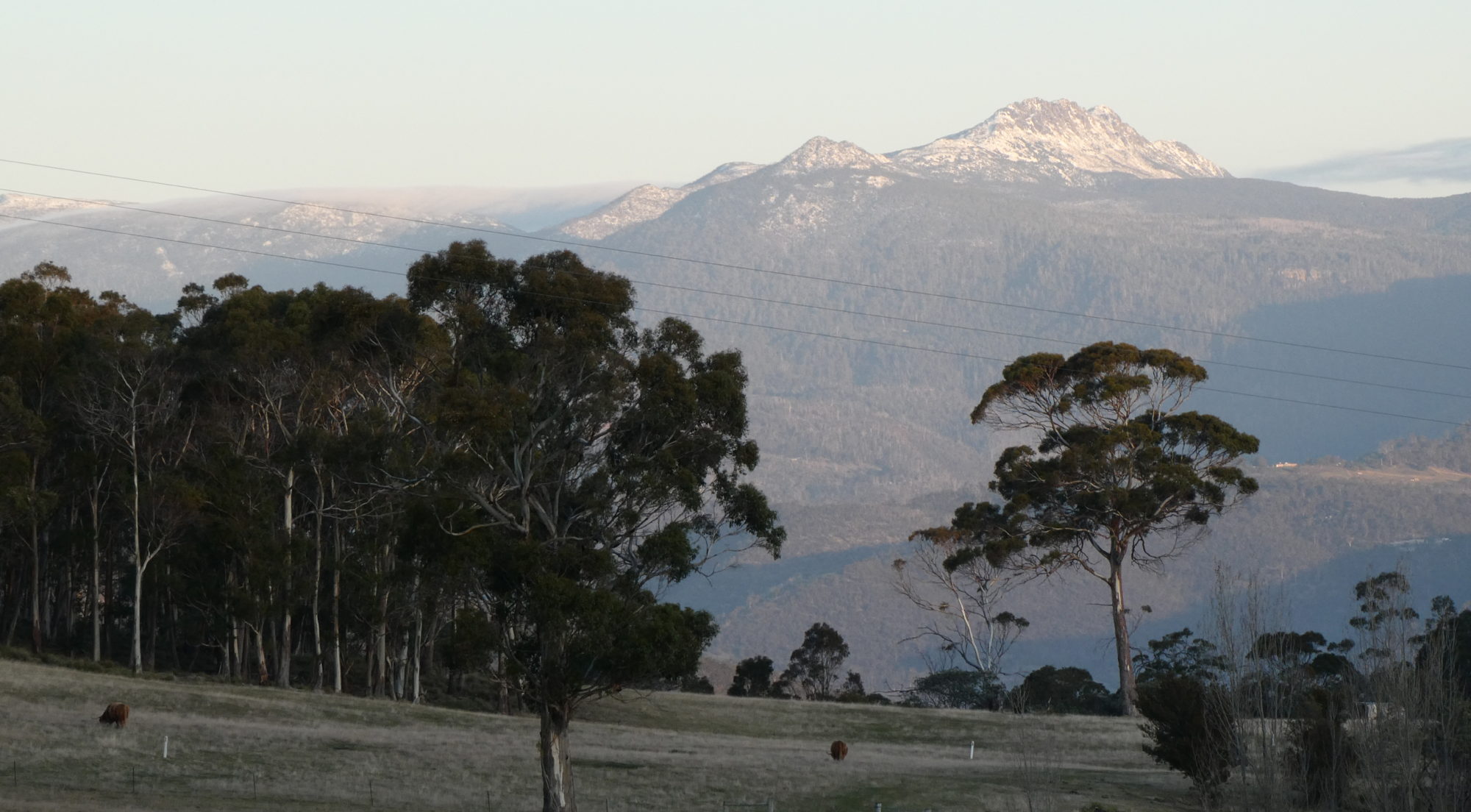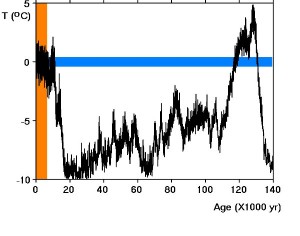Ice Age Climate
John Reid
The above graph gives an indication of global average temperature variations over the last 140,000 years. This has been calculated from hydrogen isotope ratios found in ice cores from EPICA Dome C in Antarctica. (This ratio varies because the ice is made up of water which originally evaporated from the surface of the ocean. The ratio reflects the temperature at which evaporation took place.)
The horizontal blue band is centred on present-day temperature. Its width is 0.8℃, the variation in average global surface air temperature during the 20th Century. The vertical orange band shows the extent of recorded history, i.e. about 7,000 years before the present.
The plateau which includes “recorded history” is known as “the present interglacial” or “the Holocene”. It began 11,200 years ago; 20,000 years ago the world was in the depths of an ice-age. The dramatic rise in temperature between the two states is known as “Termination I”. The dip towards ice age conditions half way through Termination I is called “The Younger Dryas”. It lasted from 12,800 years ago to 11,200 years ago
The temperature peak near 130,000 year ago, the previous interglacial, is known as the Eemian Interglacial. It was evidently 2 or 3 degrees warmer then than during the present interglacial. It was preceded by “Termination II”. There have been five terminations and five interglacials in all. Both humans and polar bears have survived all of them although the megafauna did not.
Large excursions in temperature of several degrees lasting a few thousand years occur during ice-ages. Similar events are even more marked in the Greenland ice record where they are known as Dansgaard-Oeschger Events. Sea bed sediments from the Atlantic show similar anomalies and include pebbles from icebergs (Heinrich Events). These events may well be due to the collapse of the North Atlantic ice sheet. On the other hand they may simply be random walk excursions from the Ice Age boundary.
At present we are living in a time when the climate is particularly benign and yet some scientists express alarm about tiny variations in temperature during the 20th Century. Surely they must be aware of the above facts.


